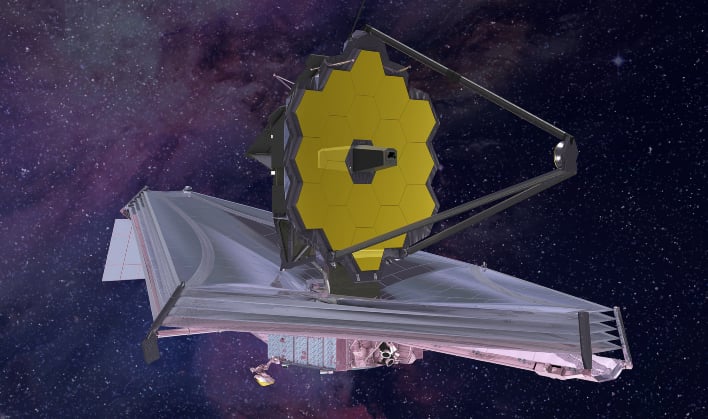NASA's Deepest Image Ever Of Our Universe Promises Revelations In Unprecedented Detail

JWST has been one of the most highly anticipated space telescopes in the long and storied history of NASA. Expectations are high, and for good reason. Up until now, astronomers and scientists have been able to peer into the universe as far back as 400 million years after the big bang. JWST is not only set to capture images from galaxies that existed as early as a few million years after the big bang, but also deliver detailed data known as spectra. NASA is scheduled to share the first images from Webb on July 12, 2022.
One of Webb's four primary scientific instruments, known as the Near-Infrared Imager and Slitless Spectrograph instrument (NIRISS), recently finished its postlaunch preparations and is now ready for use. The Single Object Slitless Spectroscopy (SOSS) mode was the last mode of NIRISS to be declared ready, and is a specialized prism assembly that disperses the light of a cosmic source to create three distinctive spectra (rainbows). This spectra reveals the hues of more than 2,000 infrared colors captured simultaneously in a single observation.

NIRISS will be one of Webb's instruments utilized in what is called The Next Generation Deep Extragalactic Exploratory Public (NGDEEP) Survey, co-led by Steven L. Finkelstein, an associate professor at the University of Texas at Austin. The survey will target the same two regions that currently make up the Hubble Ultra Deep Field. These regions are located in the constellation Fornax where Hubble has spent more than 11 days taking deep exposures. In order to produce its images, Hubble aimed its sights on nearby areas of the sky simultaneously with two of its instruments, each slightly offset from the other, known as a primary and a parallel field.
"We have the same advantage with Webb," indicated Finkelstein. "We're using two science instruments at once, and they will observe continuously."
These same researchers will also look at identifying the metal content in each galaxy, especially those in smaller and dimmer galaxies that have yet to be thoroughly examined. They will specifically look at the spectra Webb's NIRISS instrument delivers.
Currently there are still two other instruments that have yet to complete all their mode check outs. Those are NIRCAM and NIRSPEC. NASA's plan is to have all the instruments online and operational before July 12th, when the agency is set to share the first full-color images and spectroscopic data from Webb with the rest of the world.

